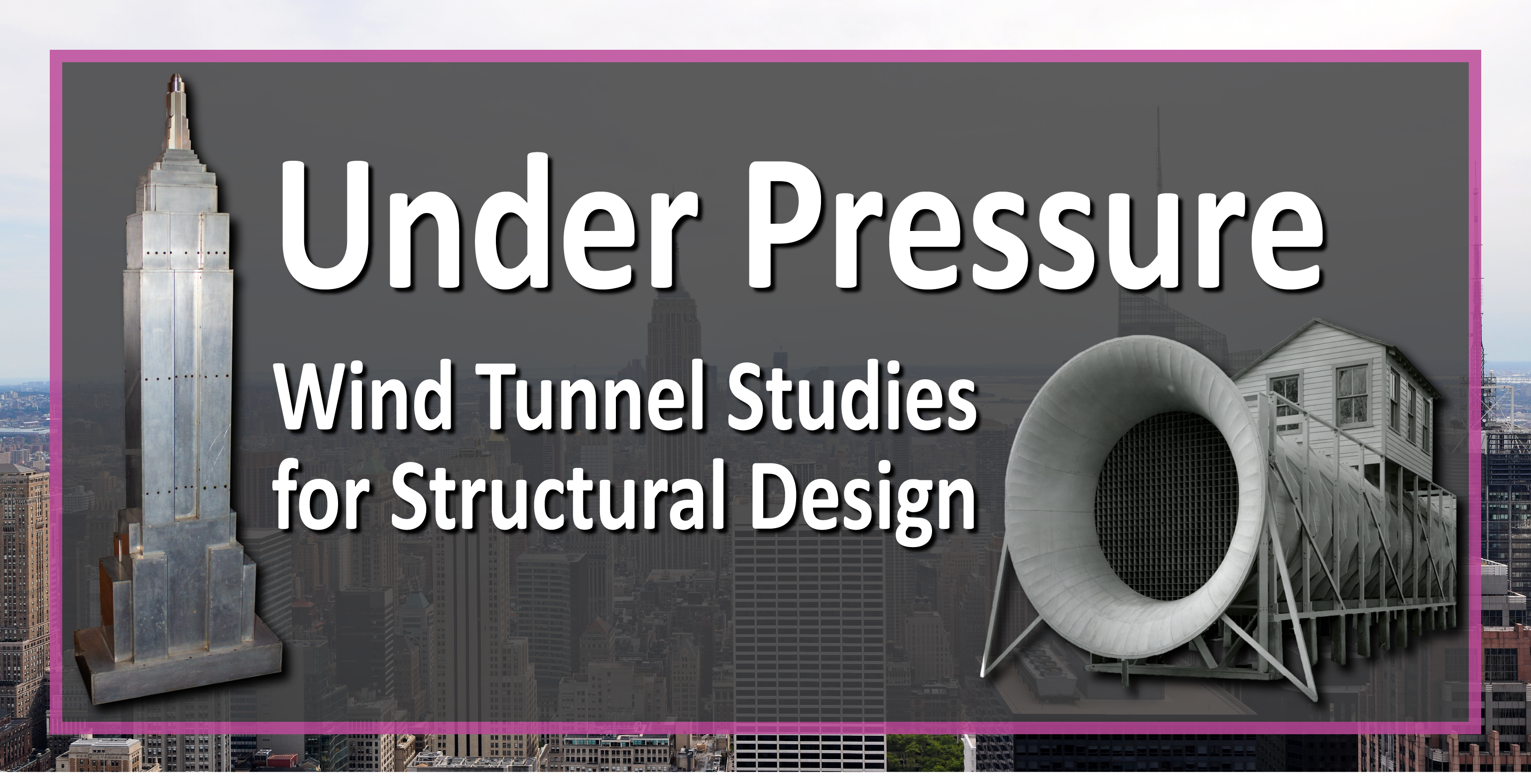Under Pressure: Wind Tunnel Studies for Structural Design

The Empire State Building was a test subject in research that provided confidence in wind tunnel measurements for the design of tall buildings.
NBS Wind Tunnel
The National Bureau of Standards (NBS) wind tunnel was designed by Dr. Lyman J. Briggs and was one of the largest in the world at the time (1922-1948) with a total length of 28 meters in three sections. The tunnel had a diameter of 3 meters and could achieve wind speeds of 112 kph.

Empire State Building Model
In 1931 Hugh L. Dryden and George C. Hill, engineers in the Aeronautical Instrument Section of NBS, constructed an experimental model of the Empire State Building made of rolled aluminum plates and wood. The model was 1.5 meters tall and at a scale of 1 to 250 compared to the actual building.

Wind Pressure Testing & Comparative Analysis
The Empire State Building model was placed in the NBS wind tunnel and tested under various wind speeds and angles. Wind pressure measurements were recorded at 102 stations on the model, and at 11 wind directions.
In conjunction with the model testing, the Research Committee of the American Institute of Steel Construction conducted measurements on the actual Empire State Building. Since wind pressure is a concern for the overall safety of any building, but especially tall buildings, the conclusions from the experiments aided in identifying necessary requirements for future tall building construction.
The Empire State Building research also helped validate the use of wind tunnel measurements for the design of tall buildings, enabling economical and safe construction of future tall buildings and expanding the utility of wind tunnel studies.



Wind Tunnel studies at NIST
In addition to the Empire State Building project, wind tunnel studies were conducted to test airspeed indicators and similar instruments, to determine the flight characteristics of aerial bombs for the military, and to design wind-resistant streetlamps.
Today, NIST continues to utilize wind tunnels for air speed metrology.

Wind Tunnel Resources
Reference
- Dryden, H.L.; Hill, G.C. "Wind pressure on a model of the Empire State Building." Bureau of Standards Journal of Research, Vol. 10, No. 4 , Research Paper 545, p. 493-523. (1933.) Online: https://archive.org/details/windpressureonmo10449dryd/mode/2up.
Example of how to reference this exhibit:
NIST Museum. 2023. Under Pressure: Wind Tunnel Studies for Structural Design . Gaithersburg, MD: National Institute of Standards and Technology. Online. https://www.nist.gov/nist-museum/under-pressure-wind-tunnel-studies-structural-design
Author. Year. Exhibit Name. Place published: Publisher. Online. URL.

